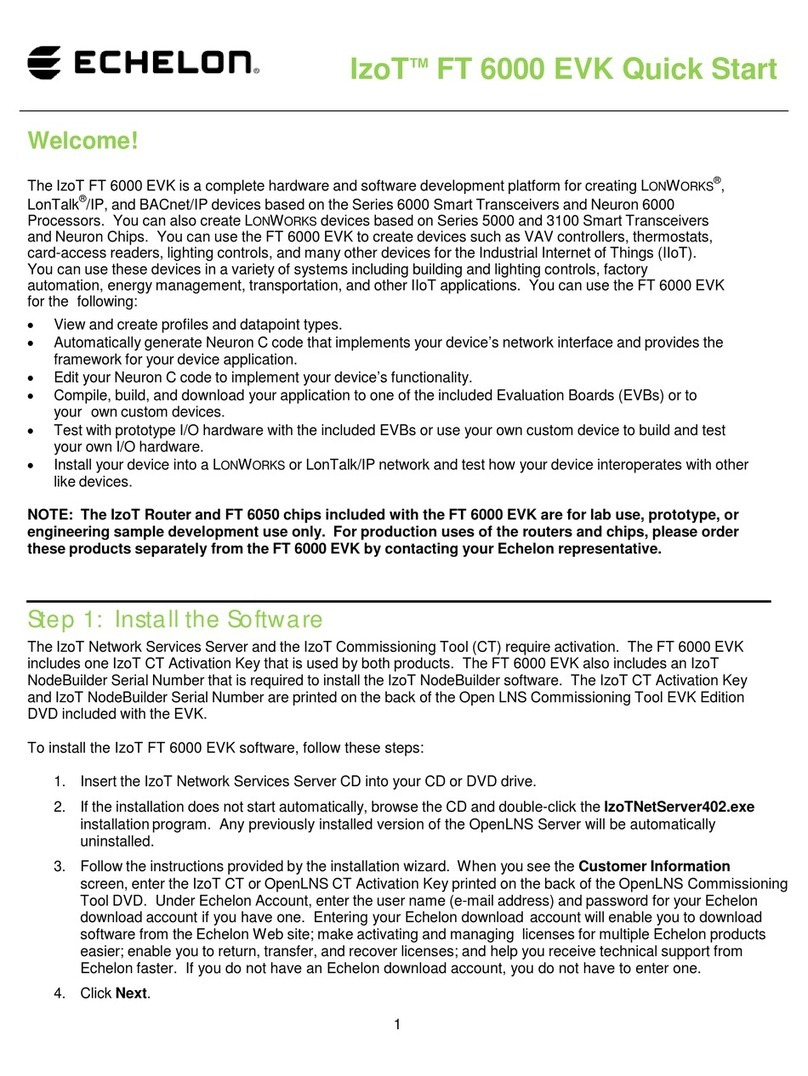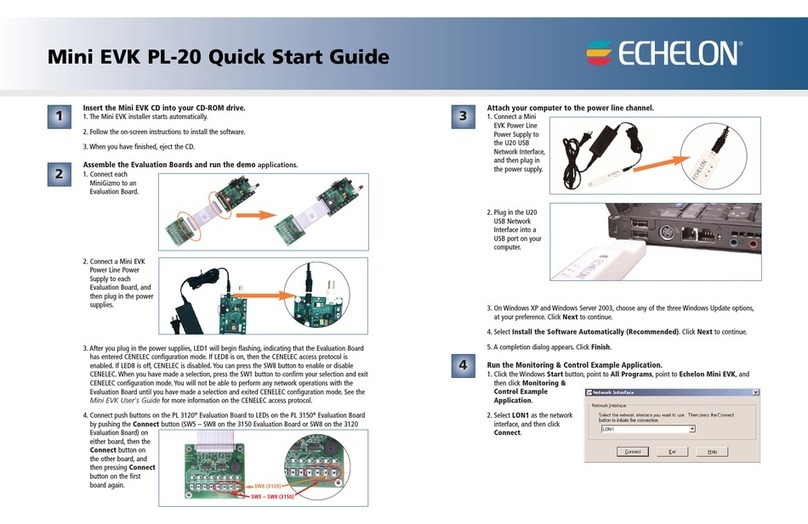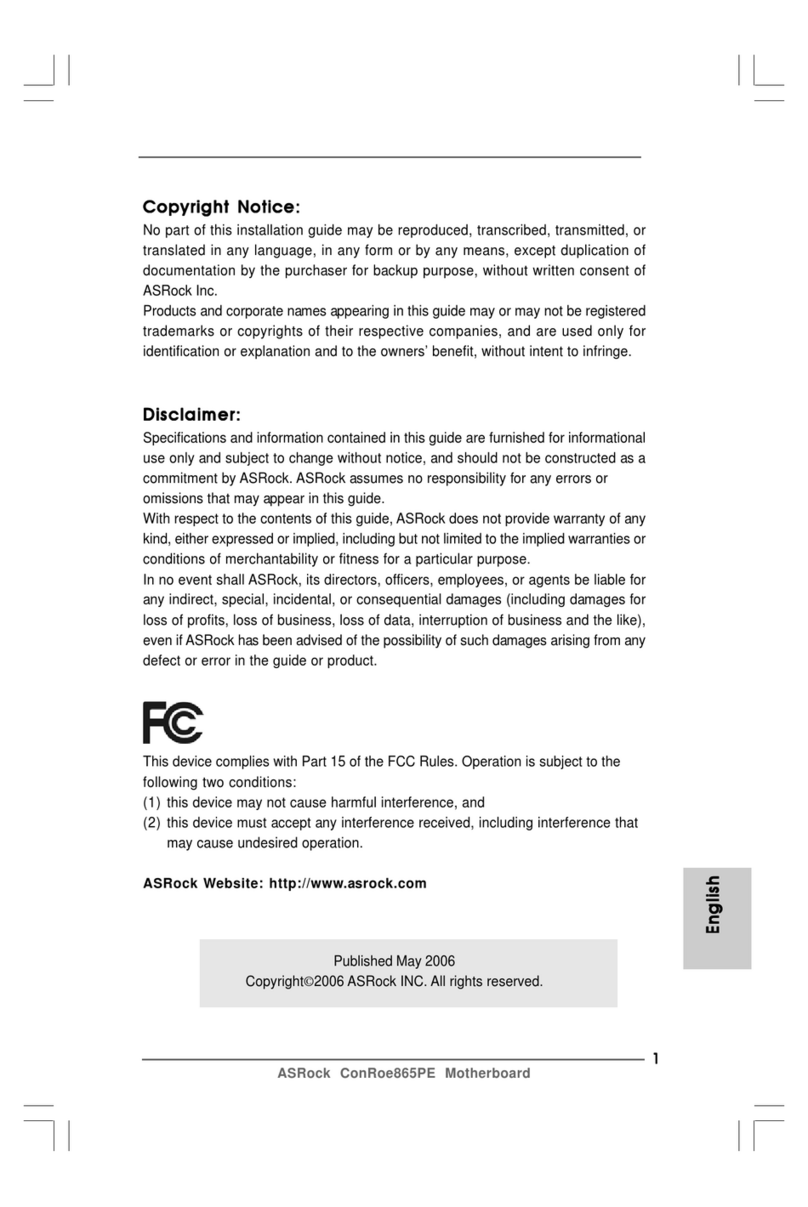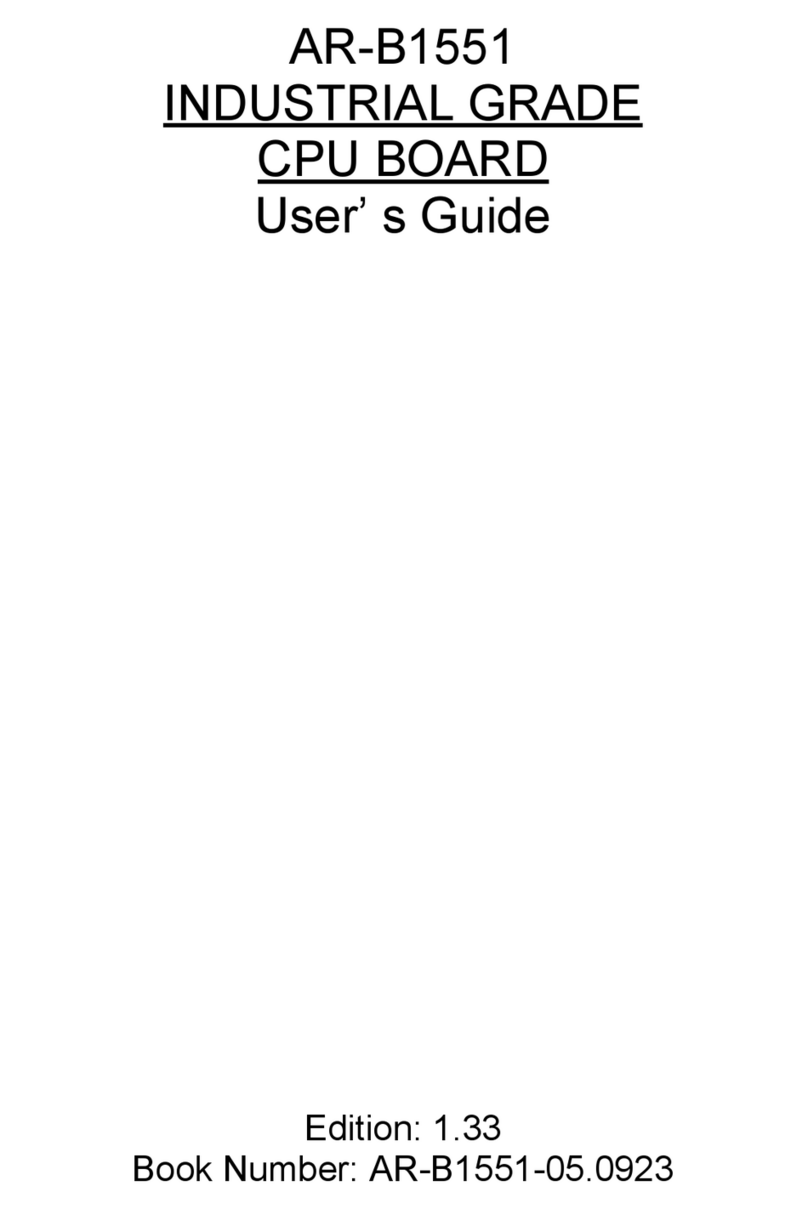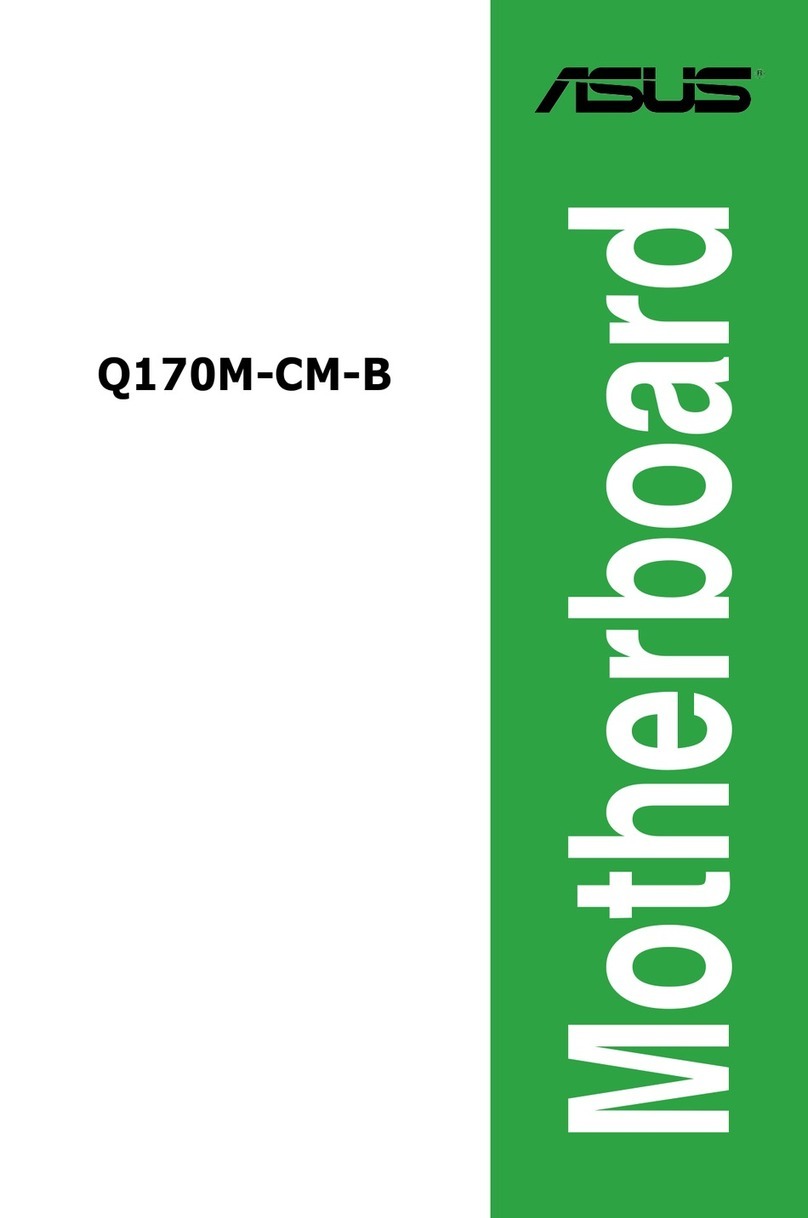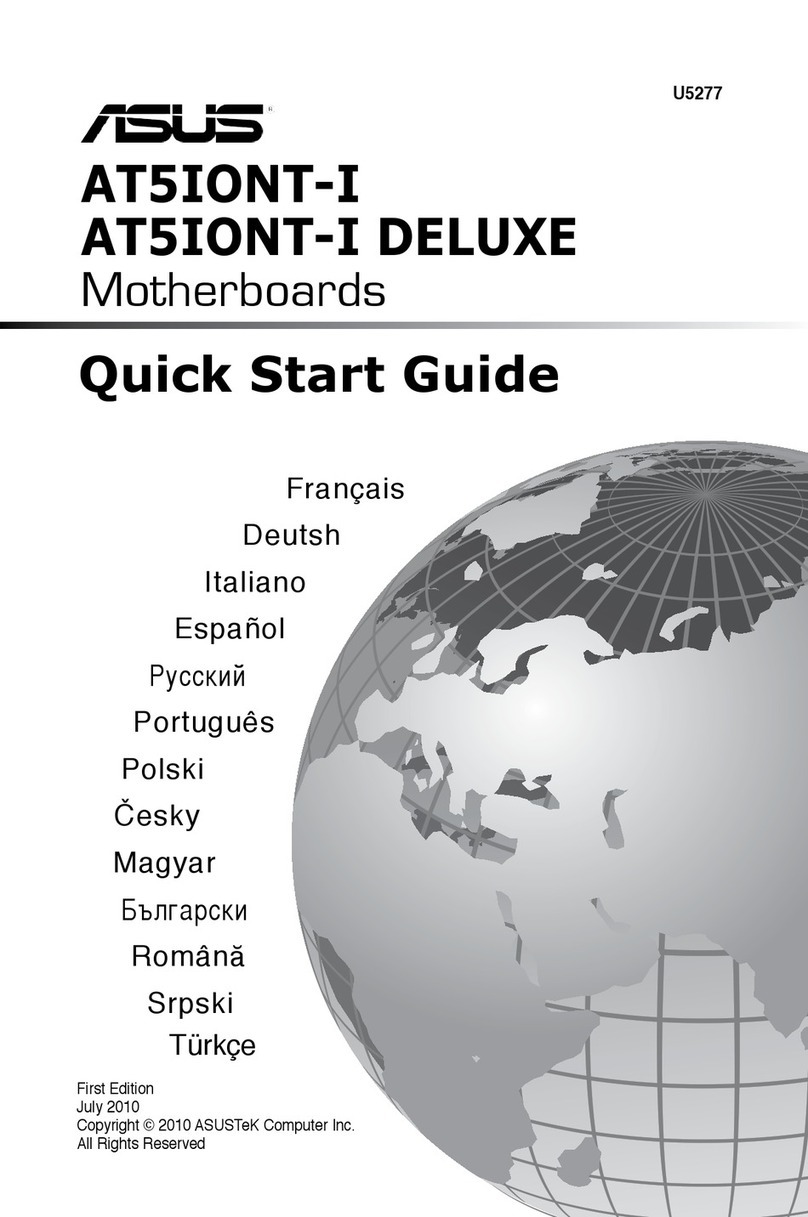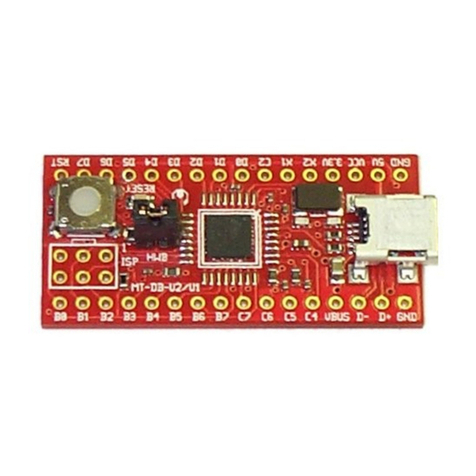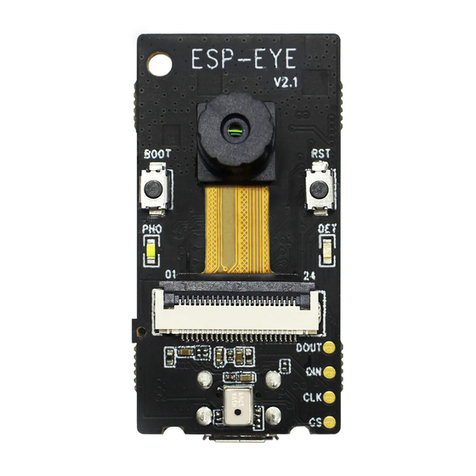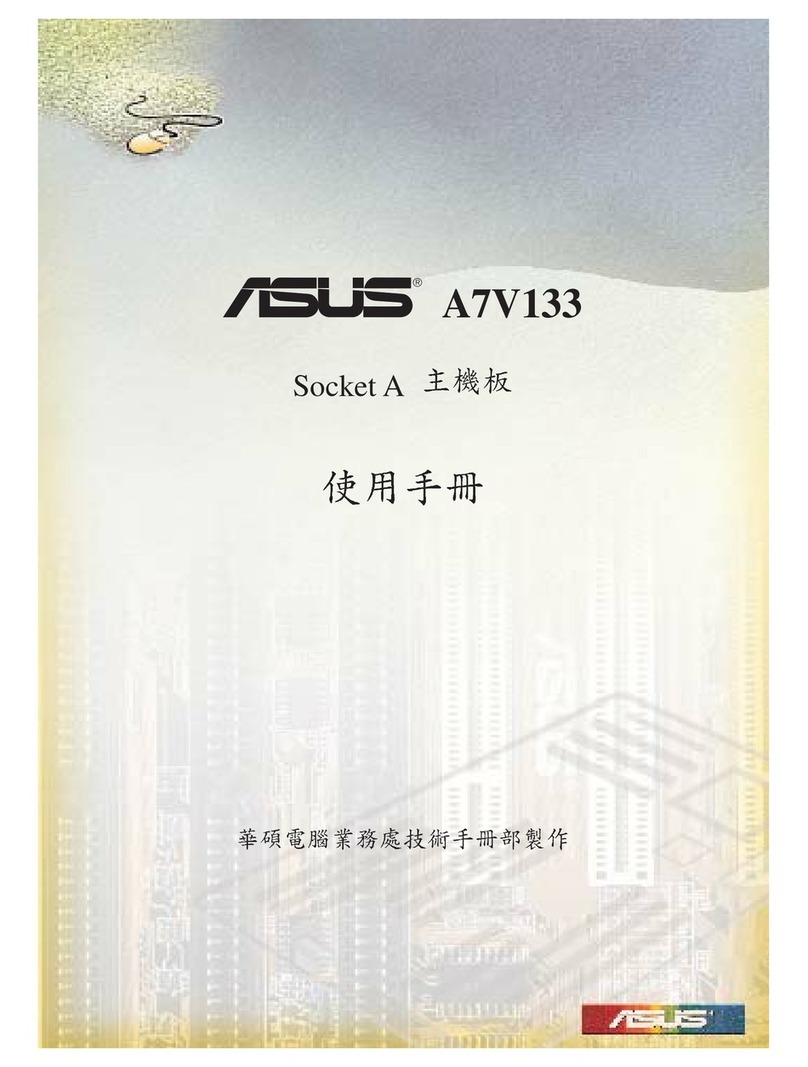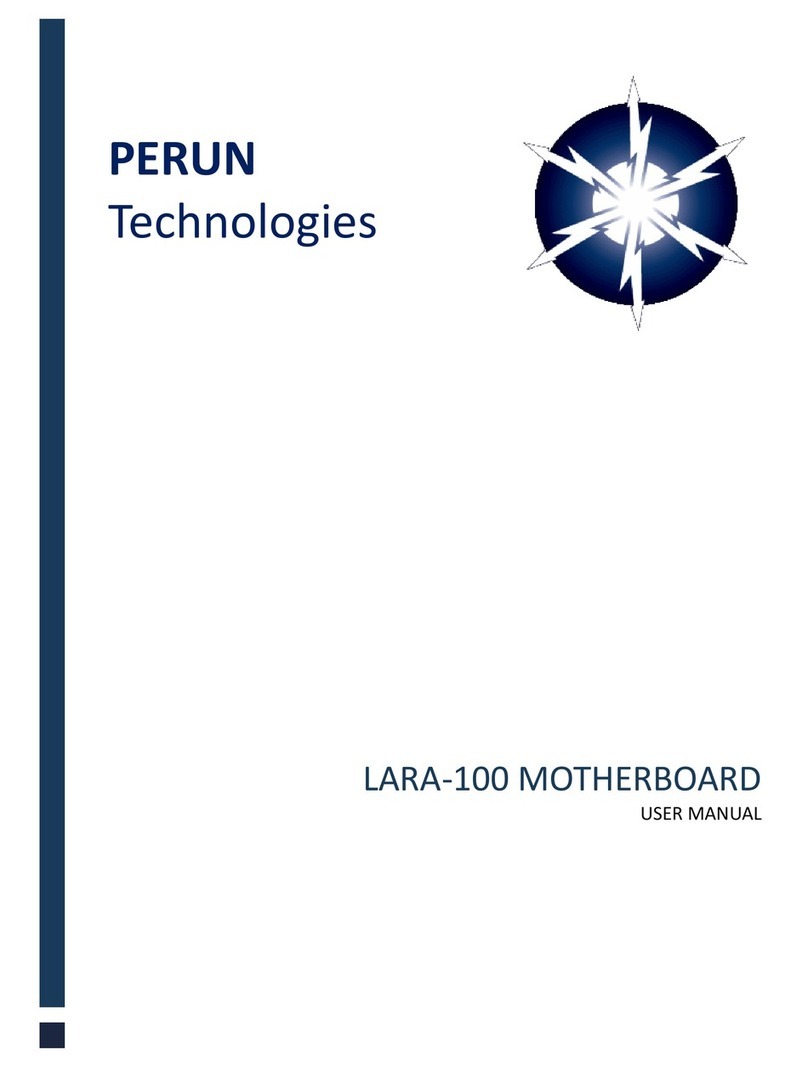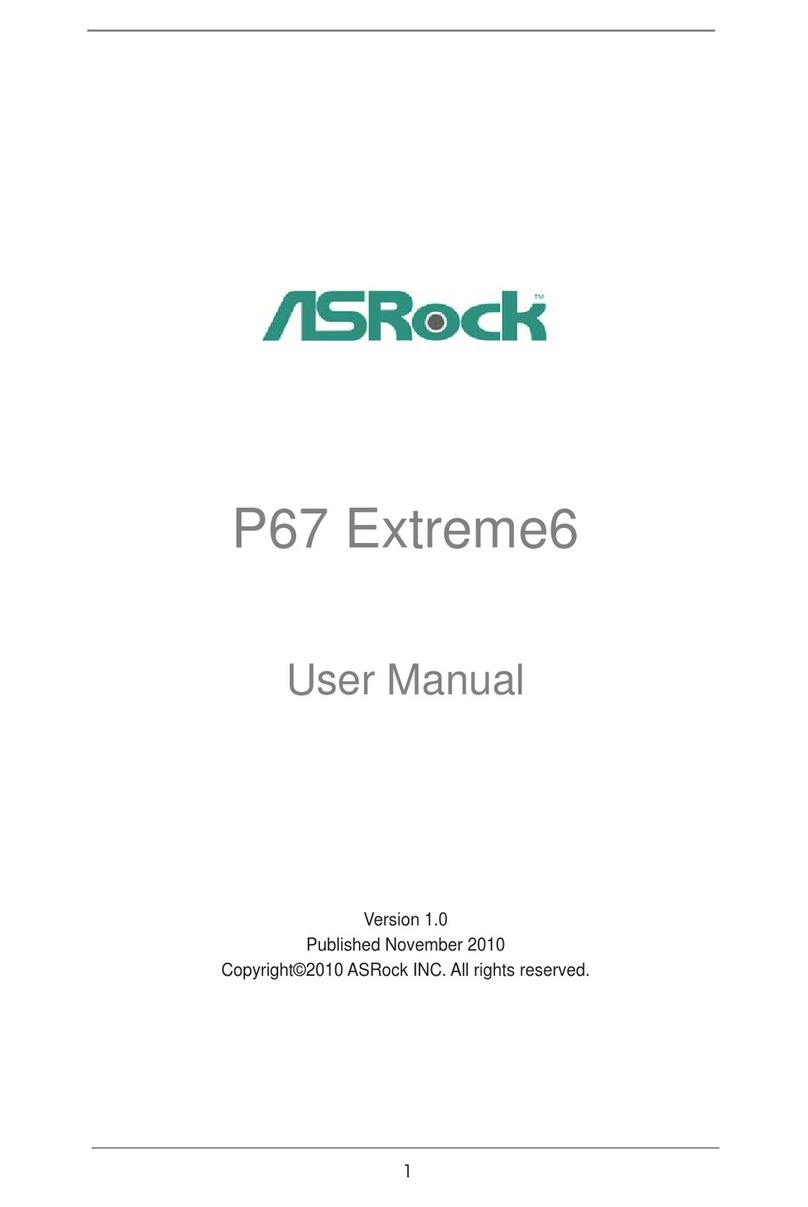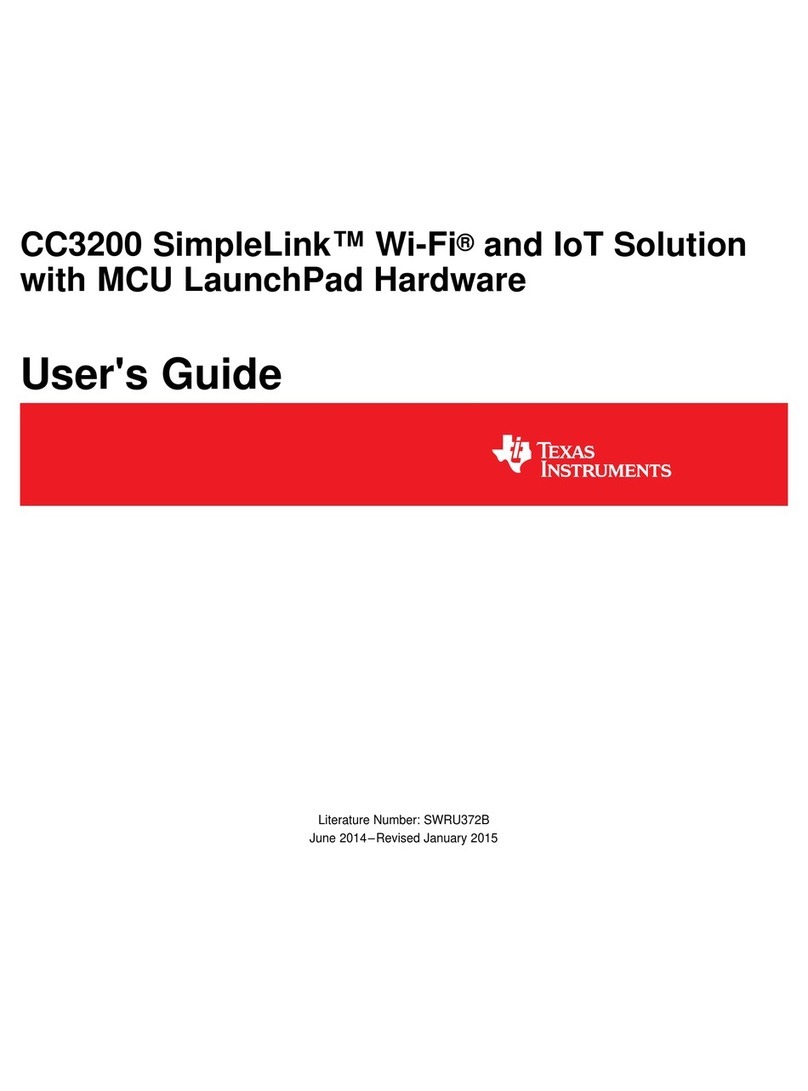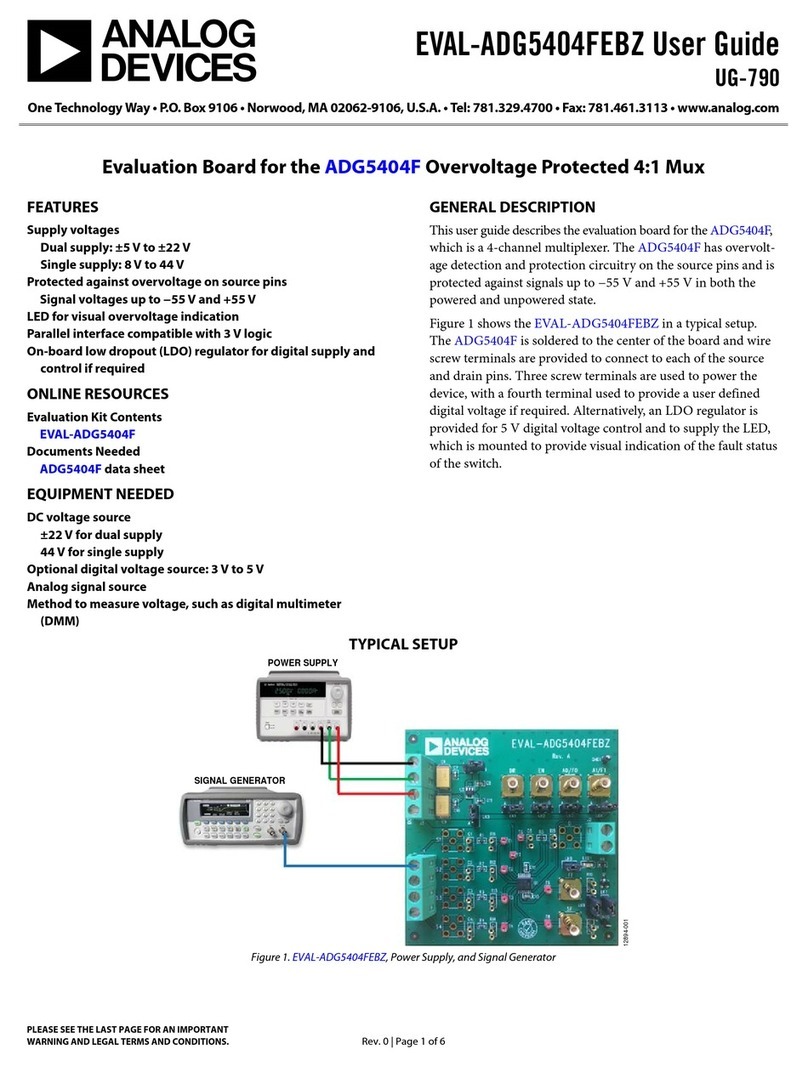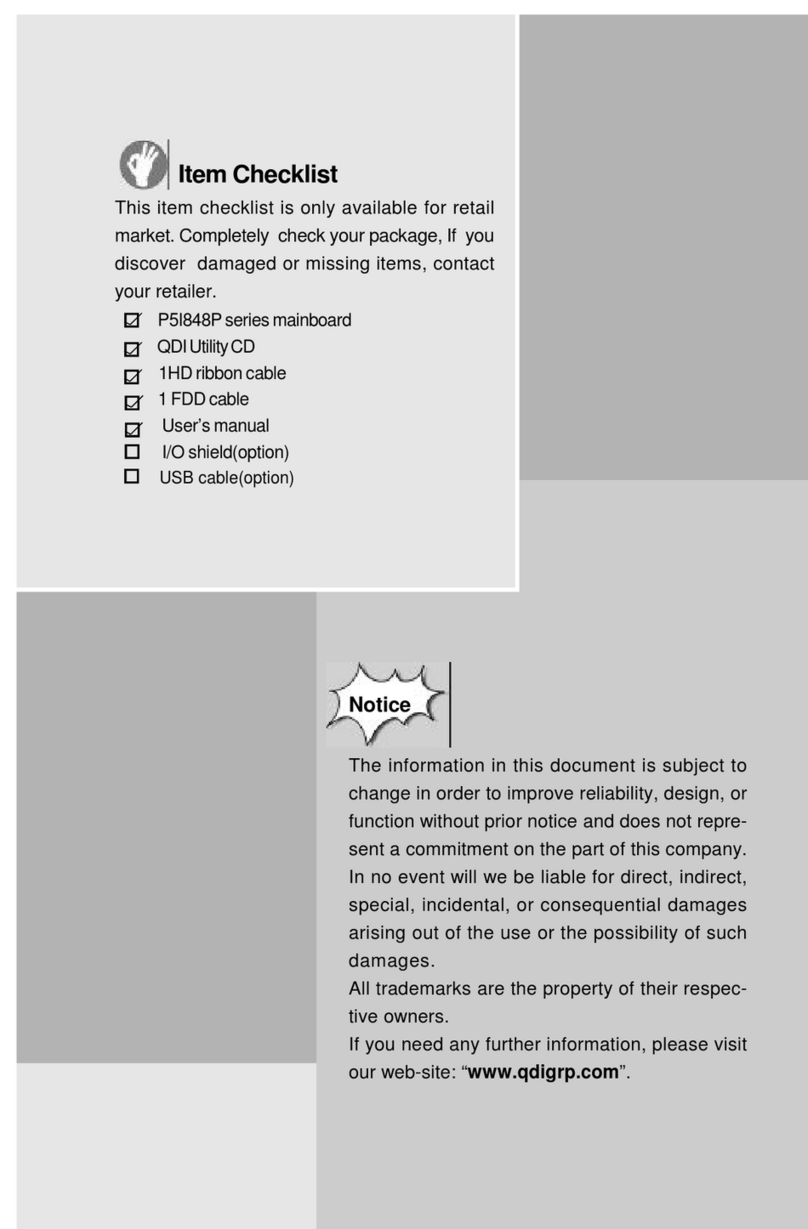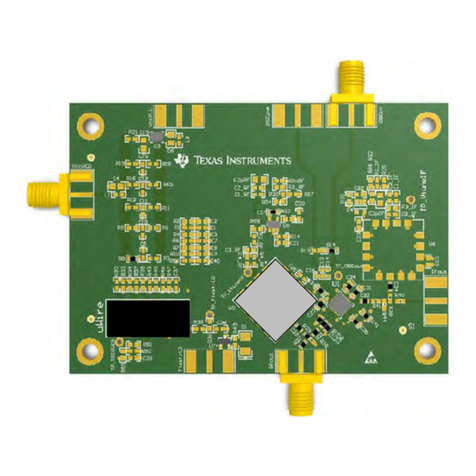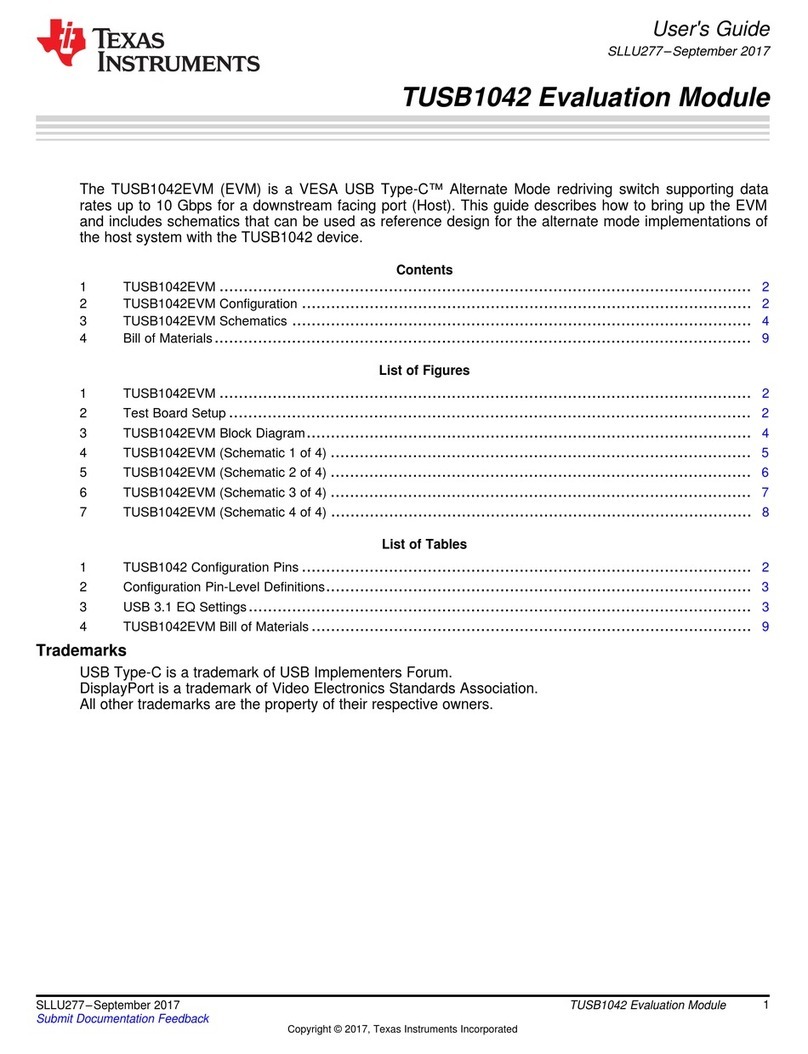Echelon FT 6000 Installation instructions

078-0504-01A
Develop, prototype, test, and debug applications
using the FT 6000 EVB.
FT 6000 EVB
Hardware Guide

Echelon, LON, LonWorks, Neuron, 3120, 3150, i.LON, LNS,
LonMaker, LonMark, LonTalk, NodeBuilder, ShortStack,
FTXL, LonScanner, LonSupport, ISI, OpenLDV, IzoT, and
the Echelon logo are trademarks ofEchelon
Corporation that may be registered inthe United States
and other countries.
Other brand and product names are trademarks or
registered trademarks of their respective holders.
Neuron Chips and other OEM Products were not
designed for use in equipment or systems which involve
danger to human health or safety or a risk of property
damage and Echelon assumes no responsibility or
liability for use of the Neuron Chips or LonPoint Modules
in such applications.
Parts manufactured by vendors other than Echelon and
referenced in this document have been described for
illustrative purposes only, and may not have been tested
by Echelon. It is the responsibility of the customer to
determine the suitability of these parts for each
application.
ECHELON MAKES NO REPRESENTATION, WARRANTY, OR
CONDITION OF ANY KIND, EXPRESS, IMPLIED, STATUTORY,
OR OTHERWISE OR IN ANY COMMUNICATION WITH YOU,
INCLUDING, BUT NOT LIMITED TO, ANY IMPLIED
WARRANTIES OF MERCHANTABILITY, SATISFACTORY
QUALITY, FITNESS FOR ANY PARTICULAR PURPOSE,
NONINFRINGEMENT, AND THEIR EQUIVALENTS.
No part of this publication may be reproduced, stored in
a retrieval system, or transmitted, in any form or by any
means, electronic, mechanical, photocopying,
recording, or otherwise, without the prior written
permission of Echelon Corporation.
Printed in the United States of America.
Copyright ©1997–2014 by Echelon
Corporation.
Echelon Corporation
www.echelon.com
ii

Table of Contents
Table of Contents ............................................................................................iii
Preface ................................................................................................................. iv
Welcome.......................................................................................................... v
Purpose ........................................................................................................... v
Audience.......................................................................................................... v
Box Contents................................................................................................... v
Content........................................................................................................... vi
Related Manuals............................................................................................. vi
For More Information and Technical Support................................................. vi
1Connecting the FT 6000 EVB Hardware..........................................1
Connection Instructions...................................................................................2
2FT 6000 EVB Hardware Details........................................................5
Introduction to FT 6000 EVB Hardware Details ..............................................6
Neuron Core..............................................................................................6
I/O Devices................................................................................................7
Push Button Switches.........................................................................7
LEDs...................................................................................................7
Temperature Sensor...........................................................................7
Light-Level Sensor..............................................................................7
LCD.....................................................................................................8
Joystick...............................................................................................8
Service Pin and Reset Buttons and LEDs ................................................8
Jumper Settings........................................................................................9
In-Circuit Programming of the External Serial Memory Device ...9
I/O Line Access (JP24).....................................................................11
LCD, Light Sensor, LEDs, Switch, & Joystick Connections (JP31)..12
Switch, Joystick, Temperature Sensor, & USB Connections (JP32)13
Connecting the USB Interface ...................................................15
Configuring a Device Application for Serial Debugging.............16
LCD 5V Power (JP33)......................................................................17
EIA-232 Interface (JP201and JP203)...............................................18
Connecting the EIA-232 Interface (without handshake lines)....19
Connecting the EIA-232 Interface (with handshake lines).........20
I/O Connector..........................................................................................22
Design and Test for Electromagnetic Compatibility.......................................22
A Emulating an FT-6010 Board..........................................................25
Emulating an FT-6010 Board ........................................................................26
FT 6000 EVB Examples Guide iii

Preface
The FT 6000 EVB is a development board for evaluating the Echelon platform for the
Industrial Internet of Things (IzoT). The platform consists of chips, stacks, modules,
routers and management software. The FT and Neuron 6000 family of chips enable
the creation of the most compact and cost-effective IzoT capable devices. The FT
6000 EVB is a complete Series 6000 device that uses an FT 6000 Smart Transceiver.
It includes a variety of I/O devices that you can use to develop prototype and
production devices.
iv Preface

Welcome
The FT 6000 EVB is a complete Series 6000 device that you can use to evaluate the Echelon platform
and create IzoT™ capable devices. The FT 6000 EVB includes an FT 6000 Smart Transceiver with an
external 10 MHz crystal (you can adjust the system’s internal clock speed from 5MHz to 80MHz), an
FT-X3 communication transformer, external serial flash memory device, and a 3.3V power source.
The FT 6000 EVB features a compact design that includes the following I/O devices that you can use
to develop prototype and production devices and test the FT 6000 EVB example applications:
•4 x 20 character LCD
•4-way joystick with center push button
•2 push-button inputs
•2 LED outputs
•Light-level sensor
•Temperature sensor
The FT 6000 EVB also includes EIA-232/TIA-232 (formerly RS-232) and USB interfaces that you can
use to connect the board to your development computer and perform application-level testing and
diagnostics. Note that you can only use one of the EIA-232 and USB interfaces at a time.
Each FT 6000 EVB also features support for the in-circuit programming of the external serial
non-volatile flash memory device on the board using the serial peripheral interface bus (SPI) interface.
Purpose
This document describes how to connect the FT 6000 EVB boards, and it describes the Neuron core,
I/O devices, service pin and reset buttons and LEDs, and jumper settings on the FT 6000 EVB
hardware.
Audience
This guide is intended for device and system designers with an understanding of control networks.
Box Contents
The FT 6000 EVB hardware ships with the following material:
•FT 6000 EVB Evaluation Boards. The FT 6000 EVB hardware includes two FT 6000 EVBs that
you can connect to a LONWORKS TP/FT-10 channel.
•IzoT Network Services Server CD. Contains the network operating system that is the standard
network management software platform for commercial and industrial IzoT and LONWORKS
networks.
•IzoT Commissioning Tool DVD Contains the software package for designing, installing, and
maintaining LONWORKS and IzoT control networks.
•Quick Start Guide. This document describes how to install the software included with your FT
6000 EVB; connect the FT 6000 EVBs and your development computer to an Echelon FT-10
channel; and create a simple network using the Neuron C example application pre-loaded on the
FT 6000 EVB.
•Power supplies (90–240VAC 50/60Hz) with power cords (US/Japan and Continental European).
•IzoT Router and Ethernet Cable
FT 6000 EVB Hardware Guide v

•Network cable. The network cable lets you interconnect your FT 6000 EVBs, and it lets you
connect the boards to other devices and to the IzoT Router over a LONWORKS FT-10 channel.
•FT 6000 sample chips
Content
This guide includes the following content:
•Connecting the FT 6000 EVB Hardware. Describes how to power your FT 6000 EVB and
connect it to the FT-10 channel and your development computer.
•FT 6000 EVB Hardware Details. Describes the Neuron core, service pin and reset buttons and
LEDs, I/O devices, and jumper settings on the FT 6000 EVB hardware.
Related Manuals
The documentation related to the IzoT NodeBuilder tool is provided as Adobe Acrobat PDF files. The
PDF files for the IzoT NodeBuilder tool are installed in the Echelon NodeBuilder program folder
when you install the IzoT NodeBuilder tool. You can download the latest IzoT NodeBuilder
documentation, including the latest version of this guide, from Echelon’s website at
www.echelon.com/docs.
EIA-232C Serial Interfacing with the
NeuronChip
Describes a simple level conversion circuit to allow the FT 6000
chip to communicate with EIA-232C devices. Also includes
Neuron C software to drive an RS232C CRT terminal.
FT 6000 EVB Examples Guide
Describes how to run the Neuron C example applications
included with the IzoT NodeBuilder Development on an FT
6000 EVB.
I/O Model Reference for Neuron
Chips and Smart Transceivers
Describes the I/O objects that are available for use with the
Neuron Chips and Smart Transceivers.
Introduction to the L
ON
W
ORKS
Platform
Provides a high-level introduction to L
ON
W
ORKS
networks and
the tools and components that are used for developing, installing,
operating, and maintaining them.
NeuronC Reference Guide
Provides reference information for writing programs using the
Neuron C language.
IzoT NodeBuilderUser’s Guide
Describes how to use the NodeBuilder tool to develop I
ZO
T
device applications and build and test prototype and production
devices
Series 6000 Chip Data Book
Provides specifications and user instructions for engineers who
develop applications and devices that use FT 6000 Smart
Transceivers, and for users of network interfaces based on the FT
Smart Transceivers or Neuron Chips.
For More Information and Technical Support
The IzoT NodeBuilder ReadMe documents provide descriptions of known problems, if any, and their
workarounds for the NodeBuilder tool. To view these ReadMe documents, click Start, point to
Programs, point to Echelon NodeBuilder, and then select NodeBuilder ReadMe First. For
vi Preface

additional information about the NodeBuilder tool, you can go to the NodeBuilder web page at
www.echelon.com/nodebuilder.
If you have technical questions that are not answered by this document, the IzoT NodeBuilder tool
online help, or the NodeBuilder tool ReadMe files, you can contact technical support. Free e-mail
support is available, or you can purchase phone support from Echelon or an Echelon support partner.
See www.echelon.com/support for more information on Echelon support and training services.
You can also view free online training or enroll in training classes at Echelon or an Echelon training
center to learn more about developing devices. You can find additional information about device
development training at www.echelon.com/training.
You can obtain technical support via phone, fax, or e-mail from your closest Echelon support center.
The contact information is as follows:
Region Languages Supported Contact Information
The Americas
English
Japanese
Echelon Corporation
Attn. Customer Support
550 Meridian Avenue
San Jose, CA 95126
Phone (toll-free):
1-800-258-4LON (258-4566)
Phone: +1-408-938-5200
Fax: +1-408-790-3801
lonsupport@echelon.com
Europe
English
German
French
Italian
Echelon Europe Ltd.
Suite 12
Building 6
Croxley Green Business Park
Hatters Lane
Watford
Hertfordshire WD18 8YH
United Kingdom
Phone: +44 (0)1923 430200
Fax: +44 (0)1923 430300
lonsupport@echelon.co.uk
Japan
Japanese
Echelon Japan
Holland Hills Mori Tower, 18F
5-11-2 Toranomon, Minato-ku
Tokyo 105-0001
Japan
Phone: +81-3-5733-3320
Fax: +81-3-5733-3321
lonsupport@echelon.co.jp
China
Chinese
English
Echelon Greater China
Rm. 1007-1008, IBM Tower
Pacific Century Place
2A Gong Ti Bei Lu
Chaoyang District
Beijing 100027, China
Phone: +86-10-6539-3750
Fax: +86-10-6539-3754
lonsupport@echelon.com.cn
FT 6000 EVB Hardware Guide vii

1
Connecting the FT 6000 EVB Hardware
This chapter describes how to power your FT 6000 EVB and connect it to your
development computer.
.
.
FT 6000 EVB Hardware Guide 1

Connection Instructions
To connect the FT 6000 EVB boards, follow these steps:
1. Unpack the equipment from the shipping carton.
Note: The FT 6000 EVB boards are shipped in protective anti-static packaging. When
assembling the FT 6000 EVB boards, the boards must not be subjected to high electrostatic
potentials. Avoid touching the component pins, or any other metallic equipment on the evaluation
boards.
2. Verify that all of the following hardware and software items are present.
Item
Qty
FT 6000 EVB
2
Power supply (90–240VAC 50/60Hz) and power cords (US/Japan and
Continental European)
2
Network cable
1
IzoT Router
1
Ethernet cable
1
IzoT Network Services Server CD
1
IzoT Commissioning Tool DVD
1
3. Install the software included with your development kit on your computer.
•Follow the instructions in the IzoT FT 6000 EVK Quick Start Guide to install the software
included with your EVK. The development tool software is available by download.
4. Connect the barrel connectors of the included power supplies into the barrel jacks on the FT 6000
EVBs, connect the power supplies to the included power cords that are appropriate for your region
(US/Japan or Continental European), and then plug the power cords into a power outlet. The
power LEDs on the boards will activate when they are powered on.
5. Connect one of the orange network connectors on each FT 6000 EVB to the included network
cable. Each board contains two orange network connectors (JP101, JP102) that are connected
together. You can use these network connectors to daisy-chain multiple devices.
2 Connecting the FT 6000 EVB Hardware

6. Follow the instructions in the IzoT FT 6000 EVK Quick Start Guide to connect your Izot router.
7. If you are using the IzoT NodeBuilder tool, complete the quick-start exercise in Chapter 3 of the
IzoT NodeBuilder User’s Guide. In the quick-start exercise, you will develop a device with one
sensor and one actuator. The sensor is a simple sensor that monitors a push button on the FT 6000
EVB and toggles a network variable output each time the button is pressed. The actuator drives
the state of an LED on the FT 6000 EVB based on the state of a network variable input.
The quick-start exercise guides you through all the steps of creating a device with the IzoT
NodeBuilder tool, including: creating the NodeBuilder project, the device template, the device
interface, and the Neuron C code that implements your device interface; plus, implementing
device functionality in the Neuron C code; building and downloading the device application;
testing the device in an IzoT network; and debugging the device application.
8. Run the Neuron C example applications included with the IzoT NodeBuilder tool on your FT 6000
EVBs. The NodeBuilder tool includes three Neuron C example applications (NcSimpleExample,
NcSimpleIsiExample, and NcMultiSensorExample) that you can use to test the I/O devices on the
FT 6000 EVBs, and create simple managed and self-installed IZOT networks.
FT 6000 EVB Hardware Guide 3

The NcMultiSensorExample application is pre-loaded on the FT 6000 EVBs and runs in
Interoperable Self-installation (ISI) mode by default. You install and connect this example
application and the other examples using the OpenLNS Commissioning tool or using the ISI
protocol. See the FT 6000 EVB Examples Guide for more information on using these example
applications.
4 Connecting the FT 6000 EVB Hardware

2
FT 6000 EVB Hardware Details
This chapter describes the Neuron core, service pin and reset buttons and LEDs, I/O
devices, and jumper settings on the FT 6000 EVB hardware.
FT 6000 EVB Hardware Guide 5

Introduction to FT 6000 EVB Hardware Details
The following sections provide additional details on the FT 6000 EVB hardware, including
descriptions of the core circuit, I/O devices, service and reset buttons and LEDs, and jumper settings.
You can view schematics for the peripheral circuitry of the FT 6000 EVB. The peripheral circuitry is
the section of the evaluation board external to the core circuit that is labeled CORE. To view the FT
6000 EVB schematics, click Start, point to Programs, point to Echelon NodeBuilder, point to
Documentation, and then click FT 6000 EVB Schematics.
Neuron Core
The Neuron core of the FT 6000 EVB includes the FT 6000 Smart Transceiver with an external 10
MHz crystal (you can adjust the system’s internal clock speed from 5MHz to 80MHz), an FT-X3
communication transformer, and an external serial flash non-volatile memory device. For details on
the FT 6000 core, see the Series 6000 Chip Data Book.
FT-X3
Communication
Transformer
FT 5000
Smart Transceiver
Crystal (10MHz)
Serial SPI Flash
(1MB)
The flash memory device is used to store your application code, configuration data, and an upgradable
system firmware image (the Series 6000 chips have no user-accessible on-chip non-volatile memory).
The external serial flash memory device communicates with the FT 6000 Smart Transceiver via the
SPI interface. When a device is reset, the application code and configuration data are copied from the
external non-volatile memory into the 64 KB internal on-chip RAM, and the device application is then
executed.
6 FT 6000 EVB Hardware Details

I/O Devices
This section briefly describes the I/O devices included on the FT 6000 EVB, which consists of two
push buttons, two LEDs, a temperature sensor, a light sensor, an LCD, and a joystick.
Push Button Switches
The FT 6000 EVB includes two push-button switches. The switches are labeled SW1 and SW2. The
SW1 push button is connected to the IO9 pin on the FT 6000 Smart Transceiver. The SW2 push
button is connected to a 74HC165 8-bit parallel-in/serial-out shift register, and data is shifted on the FT
6000 Smart Transceiver IO4 (clock) and IO5 (data) pins, with a latch strobe on IO6 (active low to
capture). The button readings must be debounced under application control.
LEDs
The FT 6000 EVB includes two blue LEDs that are labeled LED1 and LED2. LED1 is connected to
the FT 6000 Smart Transceiver IO2 pin when jumper pins 9-10 on JP31 are connected. LED2 is
connected to the IO3 pin when jumper pins 11-12 on JP31 are connected.
Temperature Sensor
The FT 6000 EVB includes a temperature sensor based on a 1-Wire® Maxim Integrated Products
digital thermometer (Part No. DS18S20). The thermometer uses the Touch I/O interface and is
connected to the FT 6000 Smart Transceiver IO7 pin. For more information about this temperature
sensor, see its data book at datasheets.maxim-ic.com/en/ds/DS18S20.pdf.
Light-Level Sensor
The FT 6000 EVB includes a light-level sensor based on a Texas Advanced Optoelectronic Solutions®
Light-To-Digital Converter (Part No. TSL2561). The light sensor is connected to the FT 6000 Smart
Transceiver IO0 and IO1 pins (via the I2C interface). The I2C address for the light level sensor is
0x39. For more information about this light sensor, see its data book at
www.taosinc.com/getfile.aspx?type=press&file=tsl2560-e58.pdf.
FT 6000 EVB Hardware Guide 7

LCD
The FT 6000 EVB includes a 4 x 20 character LCD with a yellow-green backlight from Newhaven
Display International Inc (Part No. NHD-0420D3Z-FL-GBW). The LCD is connected to the FT 6000
Smart Transceiver IO0 and IO1 pins (via the I2C interface). For more information about this LCD, see
its data book at www.newhavendisplay.com/specs/NHD-0420D3Z-FL-GBW.pdf.
Joystick
The FT 6000 EVB includes a 4-way joystick with center push button from ALPS® Electric Co (Part
No. SKQUCAA010). The joystick is connected to a 74HC165 8-bit parallel-in/serial-out shift
register, and data is shifted on the FT 6000 Smart Transceiver IO4 (clock) and IO5 (data) pins, with a
latch strobe on IO6 (active low to capture). For more information about this joystick, go to the ALPS
Web site at
www3.alps.com/WebObjects/catalog.woa/E/HTML/Switch/Tact/SKQU/SKQUAAA010.html.
Service Pin and Reset Buttons and LEDs
The FT 6000 EVB includes a Service button and a Reset button that have corresponding LEDs.
You can use the Service Pin button to send a service pin message from an evaluation board. You will
use the Service Pin button when you install the device with the OpenLNS Commissioning tool as
described in the FT 6000 EVB Examples Guide. You can use the Service LED to identify the device
state (applicationless, unconfigured, configured), and you can also use it to provide additional
application-specific information.
You can use the Reset button to reset the FT 6000 EVB when an application running on the board
appears to have failed, or to test the reset behavior of an application loaded on the board. The Reset
LED illuminates when you press the Reset button, or the FT 6000 Smart Transceiver is reset.
8 FT 6000 EVB Hardware Details

Jumper Settings
The FT 6000 EVB contains multiple sets of jumpers that you can use to configure the board. The
following sections display the locations of the jumpers on the FT 6000 EVB, show the default settings
of the jumpers, and describe how to use the jumpers to enable and disable various connections on the
board.
Performing In-Circuit Programming of the External Serial Memory Device
The JP23 shrouded connector provides support for third-party in-circuit device programmers, which
you can use to update the data in the external serial flash device used by the FT 6000 Smart
Transceiver on the FT 6000 EVB. This provides an alternative to loading application images into the
external serial memory device over the TP/FT-10 network. Note that the IzoT NodeBuilder tool only
supports downloading application images over an IzoT network; they do not directly support loading
application images through third-party device programmers or memory ICE. Echelon has tested a
third-party in-circuit programmer, the Aardvark™ I2C/SPI USB Host Adapter from TotalPhase™, as
described below.
To perform in-circuit programming of the external serial flash memory device on the FT 6000 EVB,
you use the programmer's SPI interface. Echelon has tested the Aardvark™ I2C/SPI USB Host
Adapter from TotalPhase™ (Part No. TP240141), with the 10-pin ribbon cable from TotalPhase (Part
No. TP240212), as one method for creating this connection (for more information on this adapter, go
to the TotalPhase Web site at www.totalphase.com/products/aardvark_i2cspi/). The Aardvark has six
signal lines: two for the I2C interface (SDA and SCL), and four for the SPI interface (MOSI, MISO,
SCL, and SS/CS).
To set up the Aardvark for programming the serial flash chip, choose the Device menu, and select the
SPI Winbond W25Q80 part as shown below:
Load the target *.HEX file into the Aardvark programmer's buffer to prepare for programming the
serial flash chip:
FT 6000 EVB Hardware Guide 9

To perform in-circuit programming of the external serial flash memory device on the FT 6000 EVB,
follow these steps:
1. Power off the FT 6000 EVB.
1. Plug the Aardvark programmer pod's ribbon cable connector into the EVB's shrouded header
JP23. The ribbon cable connector and JP23 are polarized to ensure proper connector orientation.
10 FT 6000 EVB Hardware Details

8 R10
4 R20
1 R30
10 T1IN
5 PD
6 PD
0 T2IN
FON PD
6 SWSH
7 TEMP
8 RXUSB
9 SW1
10TXUSB
11 LINT
1 PD
9 PD
8 R10
4 R20
1 R30
10 T1IN
5 PD
0 SCL
0 SCL L
1 SDA
1 SDA L
2 LED1
3 LED2
4 SWCLK
5 SWIN
GIZMO
P201
JP204
JP205
JP201 JP203 JP32
JP33 JP202
JP31
JP24
JP206
JP23
JP23
SCL
SDA
MISO
SCLK
CS
GND
NC
NC
MOSI
GND
2. Power on the FT 6000 EVB. The EVB will automatically be held in reset when the Aardvark
cable is plugged into JP23.
3. Use the Flash GUI software from TotalPhase to download the *.NME file to the EVB. Note that
the file extension must be renamed to *.HEX for the FlashGui software to recognize the file.
4. Power down the EVB, remove the Aardvark connector from JP23, and power up the EVB.
I/O Line Access (JP24)
This header provides access to the 12 I/O, service, and reset lines of the FT 6000 Smart Transceiver on
the FT 6000 EVB, and it provides a ground reference for instrumentation with a scope or logic
analyzer. Although JP24 can be used to wire other I/O devices, you should use the Gizmo Header
(P201) to do this because it can also provide power for other devices (see I/O Connector later in this
chapter for more information about the Gizmo header). By default, this header is open as illustrated in
the following figure:
FT 6000 EVB Hardware Guide 11

8 R10
4 R20
1 R30
10 T1IN
5 PD
6 PD
0 T2IN
FON PD
6 SWSH
7 TEMP
8 RXUSB
9 SW1
10TXUSB
11 LINT
1 PD
9 PD
8 R10
4 R20
1 R30
10 T1IN
5 PD
0 SCL
0 SCL L
1 SDA
1 SDA L
2 LED1
3 LED2
4 SWCLK
5 SWIN
GIZMO
P201
JP204
JP205
JP201 JP203 JP32
JP33 JP202
JP31
JP24
JP206
JP23
JP24
IO1
IO3
IO5
IO7
IO9
IO11
RST~
GND
IO0
IO2
IO4
IO6
IO8
IO10
SVC~
GND
LCD, Light Sensor, LEDs, Switch, and Joystick Connections (JP31)
This set of jumpers is used to connect the LCD, Light Sensor, LEDs, and the shift register for the SW2
push button (lines 1 and 2 of three) and joystick (SW3) on the FT 6000 EVB. The 13-14 and 15-16
pins on JP31 are used with the 1-2 pins on JP32 for bitshift I/O with the SW2 push button and the
Joystick. By default, all the jumpers are connected, as illustrated in the figure below. You can use an
I/O line for other I/O functions by disconnecting the jumper that connects the I/O line to an I/O device
on the FT 6000 EVB.
12 FT 6000 EVB Hardware Details
Table of contents
Other Echelon Motherboard manuals

